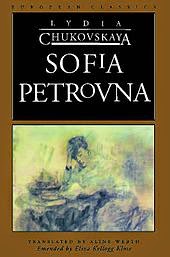Novels written during a period of
time depicting the hardships of those eras become voices of those who lived
through them. Lydia Chukovskaya’s novella “Sofia Petrovna” is that kind of
work. The story’s protagonist and title character lives her life as normally as
she can while caring for her only son Kolya. When he’s arrested the heart of
the novel is Sofia’s endless attempts to find out why, and how to get him out.
As a historical narrative as well as a work of literature the novel is a kin to
many novels written during times of great strife.
For historians the narrative within the
story is about how for many women like Sofia Petrovna who have seen their lives
turned inside out during Soviet Russia’s Great Purge. The novella can be used
as a way of assessing how women who dealt with the loss of someone who has been
arrested whether innocent or guilty as well as the long lines near the prison
to see whether they would be able to see their husbands or sons only to be
turned away. It can also assess how people were treated just for knowing
someone who may or may not be associated with terrorist activities like Sofia’s
coworker Natasha who was fired for writing Ret instead of Red only to have the
head of the department publically shame her in a meeting.
The literary qualities of the book are
that it does follow a standard conflict, crisis, resolution that most stories
have even if the resolution is that Sofia burns her son’s letter at the end for
fear of the letter damning him further as well as having her exiled. It shows
how her happiness was taken away in a moment even when she knew of her son’s
innocence. Those she tries to defend either abandon her when she needs them
most, or in the case of Natasha poisons themselves just so they wouldn’t have
to keep living in a world that doesn’t care about her. The novel is something
that can teach someone about what happened during a point in history as well as
show others how the treatment of the innocent as well as the guilty during the
Great Purge was the same because they were all scrutinized the same.

Comments
Post a Comment